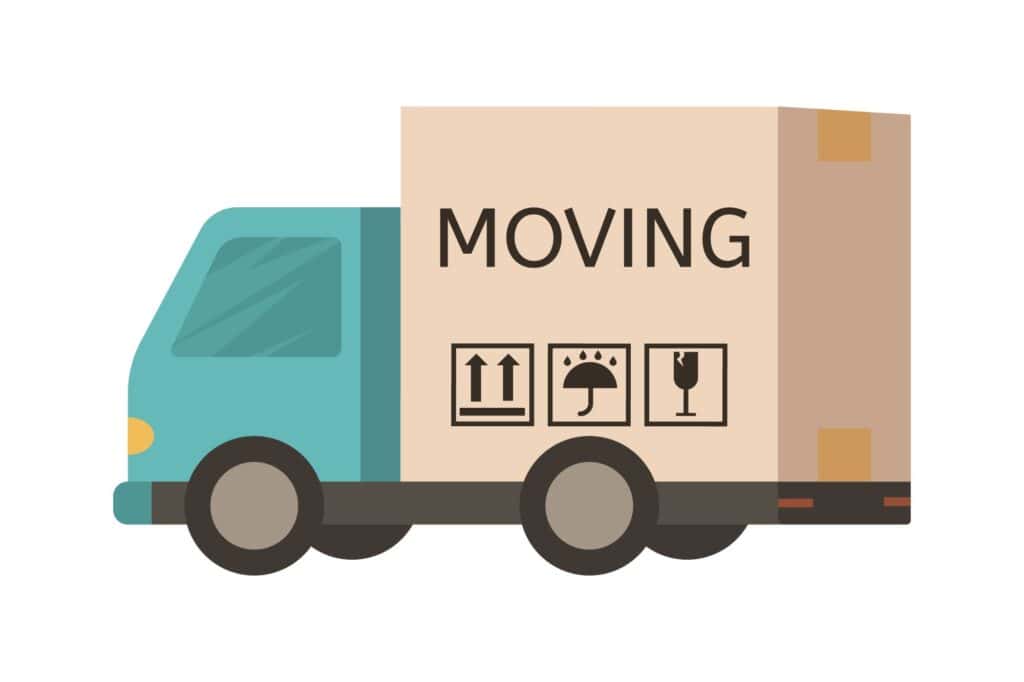Ready to relocate your office but dread the disruption? This guide demystifies how to plan and coordinate an office move, providing you with actionable strategies to orchestrate a smooth transition. Discover how to maintain operations, manage your team’s expectations, and settle into your new workspace with minimal downtime. Let’s turn the page on this daunting task and start a new chapter for your business together.
Key Takeaways
- Effective planning and clear objectives are crucial in office relocation projects, including establishing motivations for the move, assembling a dedicated project team, and setting tangible goals for the new office space.
- A detailed timeline and budget are vital, involving the identification of major milestones, scheduling and delegation of tasks, allocating funds for unforeseen costs, and consistent tracking of expenses.
- Logistical coordination, preparation of the current office for handover, setting up the new office space, and post-move adjustments are integral steps for a seamless transition, complemented by celebrations like an office warming party to boost morale.
Essential Preliminary Steps for Office Relocation
Before the first box is packed or the new keys are in hand, the foundational measures of an office relocation project set the tempo for success. It’s a symphony of strategic planning, from assessing the need for a fresh office space tailored to the company’s evolving demands to understanding the potential impact on day-to-day operations during the relocation process. An office move project manager plays a crucial role in orchestrating this complex process.
Envisioning the harmonious blend of improved facilities and a positive work environment in a strategic new location is the prelude to a seamless transition.
Define Your Office Move Motivations
The first note in our office relocation symphony is identifying the motivations behind the move. Is it the crescendo of business growth, the allegro of expansion, or perhaps a strategic adagio shift in business strategy? The drivers could range from boosting staff morale with a vibrant new office design to attracting the finest talent and creating a positive brand image that resonates with your ethos. Grasping these motivations early sets the stage for a focused and orchestrated moving process.
Establish Your Office Relocation Project Team
No ensemble can perform without its conductors and musicians. Similarly, for a harmonious office move, an ensemble of a dedicated moving team is imperative. Assembling this team early on creates a chorus of skills and expertise necessary to keep the relocation composition flowing smoothly.
The leader, akin to a maestro, orchestrates the move with effective organisation and decisive authority, ensuring each note is played at the right moment.
Set Clear Objectives for Your New Space
With a clear score to follow, setting non-negotiables for the new office space ensures that the final arrangement supports productivity and business success. Whether it’s a fresh style, revamped furniture, or a reorganised layout, the new space should be a composition that meets the unique needs of your company.
Designated meeting rooms equipped with cutting-edge technology are essential for harmonious collaborations and effective communication among employees. And, as your business crescendos, a scalable telecommunication system is the backbone of an office setup that’s ready for growth.
Crafting a Detailed Office Move Timeline
The rhythm of an office move is dictated by its timeline, a carefully composed piece that ensures each task is executed in harmony with others. This roadmap begins with the early preludes of planning, stretching 6 to 12 months before the move, and crescendos in a choreographed ballet of logistics in the final weeks.
Whether it’s a local move expected to be completed in a day or a longer concerto spanning up to a year, including location scouting, negotiations, and the actual transition, a detailed floor plan and a timeline that resonates with all involved are the keys to a smooth adagio.
Identify Major Milestones
In the composition of an office move, the major milestones are the forte moments that carry the momentum forward. These key dates, such as the current lease termination, the new lease signing, and the moving date, are the measures that structure the entire relocation symphony. Recognizing these pivotal points in the score is essential to the harmonious execution of the office move.
Schedule Tasks and Delegate Responsibilities
As the melody progresses, centralising information becomes a harmonious way to involve multiple individuals in the planning and execution of the office relocation. Like refining a composition, the moving plan must be periodically reviewed, with each task’s tempo checked by responsible parties to maintain the rhythm of a successful move.
Communicate Timelines to All Personnel
Effective communication is the chorus that unifies all members of the company. Announcing the office move through a mix of emails, posted notices, and company meetings ensures that every employee, including those in hybrid roles, is well-prepared for the transition. Keeping the entire team informed through detailed FAQs and guidelines helps foster a collegial atmosphere and smooth adjustments to the new environment.
TIP
It’s essential to start communicating about the move early, minimising disruptions and ensuring that each voice in the company harmonises with the move’s objectives.
Budgeting for Your Office Relocation
The financial arrangement of an office move is a delicate balance between anticipated expenses and the improvised solos of unexpected costs. Establishing a clear budget ensures that every financial note, from moving services to new furniture, resonates within the allotted financial acoustics. Reviewing the current lease is akin to checking your instruments before a performance, and preparing for potential costs from early termination or damages.
With the budget’s composition clearly defined from the outset, the symphony of relocation can proceed without the dissonance of unforeseen expenses.
Estimating Costs
The overture of the budgeting process begins with estimating the costs of moving services. The dynamics of packing and moving costs vary based on the move’s distance, the volume of office furniture and equipment, and the urgency of the service required.
Consultations with suppliers about new furniture and equipment for the new office space set the stage for a significant portion of the budget’s composition.
Allocating Funds for Unexpected Costs
A masterful composition allows room for improvisation, and budgeting for an office move is no different. Allocating a distinct category within the budget for unexpected expenses ensures the financial score can adapt to unforeseen incidents. Delays in the moving process, for example, can create financial crescendos that must be managed effectively to prevent unnecessary stress.
Setting aside a reserve fund each month into a dedicated savings account can act as a safety net, providing the flexibility to address any emergent dissonances during the move.
Tracking Expenses Throughout the Move
The crescendo of the budgeting symphony is the continuous tracking of expenses throughout the move. A detailed financial score, with clear delineations between each budgeted section, allows for the monitoring of expenditures and ensures that the financial performance stays within the established constraints.

Organising and Preparing Your Current Office for the Move
As the office relocation symphony approaches the middle movements, organising and preparing the current office space becomes the central theme. This involves:
- Designing a decommissioning plan
- Ensuring the old office is restored to its original condition, free of any branding before the moving process
- Creating a checklist
- Tagging furniture and equipment
- Planning for the disposal or donation of non-essential items
These steps are all instrumental in a smooth transition.
Staff should be encouraged to clear their desks and pack non-essentials ahead of the move, aiding in the diminuendo of the current space.
Conduct an Inventory of Office Equipment and Supplies
The prelude to the packing process is conducting a comprehensive inventory of office furniture and equipment. This meticulous cataloguing of tech equipment and supplies is the foundation for an organised and successful Islington office move.
When installing new furniture and equipment, having an inventory list ensures a seamless transition to the new environment.
Plan for Disposal or Donation of Non-Essential Items
Transposing to the new office often involves shedding the excess notes of non-essential items. Identifying personal belongings and furniture that no longer serve a purpose and arranging for their sale or donation is a liberating adagio in the moving symphony.
Recycling or donating equipment not making the move to the new location is not just practical, but also socially responsible.
Prepare Your Current Space for Handover
As the final note of the current office space’s composition is played, preparing for the handover becomes paramount. To ensure a smooth transition and safeguard the company’s reputation for future leasing opportunities, the following steps should be taken:
- Assess lease responsibilities.
- Calculate dilapidation costs.
- Organise repair services to ensure the old office space is in pristine condition for the next occupant.
By following these steps, you can ensure a seamless handover of the office space.
The Logistics of Moving to a New Office
The crescendo of the office move is the logistics of transitioning to the new office space. Selecting a reputable, licensed, and insured moving company becomes the backbone of this movement. Planning the logistics of moving day ensures a clear path for movers and a well-orchestrated sequence of items transitioning from old to new.
Planning the logistics of moving day ensures a clear path for movers and a well-orchestrated sequence of items transitioning …
Using speciality boxes and a colour-coding system keeps the move in rhythm while coordinating the timings for truck departures and arrivals avoiding any unnecessary fermatas on moving day.
Selecting and Working with a Moving Company
In the allegro of moving, selecting a company with commercial moving experience is like choosing the right instrument for a solo. Drawing up a project plan that incorporates the best full-service office movers in Islington is part of the selection process, ensuring each piece of office furniture is handled with care.
Once a moving company is selected, a project manager oversees the process, akin to a maestro ensuring each instrument is tuned and ready for performance.
Packing Materials and Strategies
Before the grand movement of office relocation begins, securing the right packing materials is as vital as selecting the right instruments for a concert. Backing up data is the prelude to this stage, followed by sourcing robust packing materials designed to protect sensitive equipment during transit.
Specialised containers and cushioning materials ensure that delicate tech equipment arrives in tune and ready for immediate use in the new office.
Coordinating Moving Day Operations
The day of the move is a crescendo of activity, where coordination and preparation play key roles in the symphony of logistics. Obtaining a full breakdown of building rules from management dictates the logistics of moving day, ensuring the performance goes without a hitch.
Minimising downtime and disruption is crucial, as it prevents staff frustrations and keeps the productivity melody flowing. As the final act of the move draws to a close, unpacking and testing essential technology like phones and computers is critical to continue business operations without missing a beat.
Setting Up Your New Office Location

The postlude of an office move is the setting up of the new space. Designing a detailed floor plan that harmonises with the layout of office equipment, furniture, and employee seating is an essential composition that takes 1 to 4 months to perfect.
The new office setup will require the following steps:
- Cleaning and decorating the space to create a welcoming and positive environment.
- Arranging the furniture and layout to encourage collaboration and teamwork.
- Setting up the necessary equipment and technology for efficient work.
- Adding personal touches and decorations to make the space feel comfortable and inspiring.
Like tuning instruments for a new performance, this stage ensures the office is ready to host the daily symphony of work, handling all the tasks efficiently.
Designing a Functional Floor Plan
Like a composer drafting a score, designing a functional floor plan is about arranging each section – from desks to communal spaces – to create a harmonious workplace. It’s a meticulous process, from measuring dimensions to planning the layout, that lays the groundwork for an efficient and productive office environment.
This stage of the relocation symphony considers:
- The physical space of the work environment
- The acoustic qualities of the space
- Ensuring that every conversation and keystroke contributes to the workplace’s melody rather than its noise.
Installing Furniture and Equipment
The crescendo of setting up your new office is the installation of furniture and equipment, a movement that requires timing and precision. Comparing the dimensions of existing furniture to the new space ensures that only the pieces that fit the new arrangement are moved, avoiding any discordant notes during the transition.
Planning for the delivery and installation times is crucial to ensure that the office is not just ready, but fully functional, for when employees return, allowing the symphony of work to resume without interruption.
Transferring Services and Updating Information
The finale of the new office setup is transferring services and updating the company’s office address, ensuring that the business continues its rhythm without missing a beat at the new office address. Carriers and internet service providers should be notified at least two months in advance to discuss transfer costs and installation schedules, avoiding any dissonance in connectivity.
The installation and proper functioning of all technology are the final notes that round out the symphony, taking one to three weeks to ensure operational harmony. Updating the online presence with the new address and confirming that all marketing materials reflect this change is critical to maintaining the melody of business opportunities.
Post-Move Adjustments and Celebrations
As the symphony of the office move concludes, the emphasis shifts to fine-tuning the IT infrastructure and addressing any lingering post-move concerns. These adjustments are akin to the final rehearsal, where each section of the orchestra fine-tunes their instruments to ensure a flawless performance.
Testing and troubleshooting are the encores that guarantee the office move’s success is not a fleeting moment but the beginning of a new era of productivity and workplace satisfaction.
Address Post-Move Concerns and IT Infrastructure Fine-Tuning
The postlude to an office move is not complete without a thorough fine-tuning of the IT infrastructure. Testing the network’s capabilities and troubleshooting any issues are crucial steps to ensure that the technological backbone of the company is ready to support its operations.
Establishing a feedback process allows for any post-move crescendos to be addressed swiftly, maintaining the harmony of the workplace and the company’s reputation for excellence.
Host an Office Warming Party
With the move complete, it’s time to celebrate the successful relocation with an office warming party. This celebratory event is the coda to the moving symphony, recognizing the hard work of the employees and marking a new beginning in a new space.
Hosting the celebration within the first week after the move sets the tone for a positive and collaborative workplace culture, inviting each staff member to contribute their unique notes to the ongoing melody of the company’s story.
Summary
As the final notes of our office move symphony fade away, we reflect on the importance of harmonious planning, meticulous coordination, and the celebration of new beginnings. From the early preludes of defining move motivations to the final coda of post-move adjustments and celebrations, orchestrating a successful office move is a testament to the strength and adaptability of your team. Embrace this change as an opportunity to compose a new workplace melody that inspires creativity, productivity, and unity within your organisation.
Frequently Asked Questions
What are the phases of the office move?
The phases of an office move typically include pre-move preparation, office relocation, and post-move smooth set. These steps are essential for a successful transition.
How do I create an office move plan?
To create an office move plan, start by making a master plan, setting a budget, establishing a communications strategy for employees, creating an inventory of furniture and equipment, finding a moving company, and consulting with interior designers or architects to ensure a smooth transition. Good luck with your office move!
How far in advance should we start planning our office move?
Start planning your office move 6 to 12 months in advance to ensure a well-coordinated and stress-free transition, with the final preparations and logistics being planned out 1-2 weeks before the move date.
What are some important considerations when selecting a moving company?
When selecting a moving company, prioritise commercial moving experience, verify their credentials and professional accreditations, confirm their licensing and insurance, and obtain quotes from at least three companies to make an informed decision.
How should we communicate the move to our employees?
To communicate the office move to employees, send an initial email followed by an in-person or online meeting, and keep everyone updated through regular emails, posted notices, and announcements during company meetings. Engage hybrid employees early in the planning discussions to ensure their involvement.








